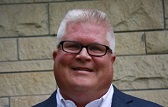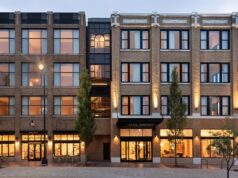
More than two decades ago, a company that manufactures circuit boards* for use in a variety of electrical products was facing a quandary. To clean their circuit boards, the company was using a solvent that contained ingredients determined to be harmful to the environment. As a result, they were given two years to phase out the use of these solvents. Company management decided they had four possible options to address this situation:
1. They could simply not clean the circuit boards, a solution referred to as the “no-clean” process.
2. They could turn to cleaning processes that use nonsolvent cleaning chemicals.
3. They could use solvents that were not harmful or less harmful for the environment.
4. They could look into alternative cleaning processes using no chemicals whatsoever.
The manufacturer quickly decided using the so-called no-clean process was not an option. Manufacturing circuit boards sometimes leads to the creation of what are called “solder balls,” which must be removed to prevent short circuits in the product. To remove these necessitates cleaning, meaning the no-clean process was obviously not a viable option.
Nonsolvent cleaning, which includes methods such as blasting the circuit boards with dry ice or steam, seemed like a promising option. However, after considering the pros and cons, it was determined that this method was only viable in certain specific situations. Similarly, cleaning systems using less harmful solvents also proved acceptable, but only in specific situations and types of circuit boards.
Company Chose Aqueous Ozone
The most attractive option, according to this manufacturer, turned out to be an alternative cleaning system that uses aqueous ozone. These systems have essentially no impact on the environment, minimal health hazards for users, are cost effective, and clean circuit boards effectively.
Our circuit board manufacturer decided this would be the best option for cleaning its products because the process is effective and has essentially no environmental impact. But can such a system be used in hotel properties that are also looking for effective cleaning systems that have little or no impact on the environment and hotel guests? For more and more hospitality properties, the answer is a yes.
Ozone is a naturally-occurring gas (O2) that is created in the atmosphere when sunlight adds an extra oxygen atom to the molecules in the air. It can be mechanically created and infused into water to make an effective cleaning agent known as aqueous ozone. While many hotel purchasers are unfamiliar with systems using aqueous ozone, it is not new. In fact, water utility companies have been using ozone to purify water for decades. But more recent technological innovations have made aqueous ozone more stable and longer lasting, enabling more effective cleaning.
Can be Compared to Chlorine
When used to clean floors, counters, walls, fixtures, and other hotel property surfaces, aqueous ozone works in many ways like cleaning with chlorine bleach but without the potentially negative impact on the user and the environment. When applied to surfaces or fixtures, aqueous ozone oxidizes and destroys the cell walls of microorganisms and contaminants on the surface— essentially the same thing chlorine does. The surface is wiped clean and no residue is left on the surface.
Aqueous ozone cleaning systems are now being used in many corporate and industrial facilities. And with new technology making these systems more flexible, cost effective, and easier to use, the hotel industry is increasingly likely to find them an attractive cleaning alternative as well. Some of these systems can be attached to sinks in janitorial closets and are able to dispense the product into sprayers, which can then be used to spray the solution on surfaces. There are also caddies available that are portable and produce the solution on sight and on demand that allow users to clean carpets, floors, and other larger surfaces.
Chemical-free cleaning is just beginning to make headway in the professional cleaning industry, but such technology is likely to play a larger role in cleaning in the near future. Already some green cleaning advocates are touting their value as a step beyond green cleaning. And some of America’s leading global technological trendsetters in Silicon Valley are using them in their corporate offices with considerable success—a development that will likely help spread the word about these products around the world.
Matt Montag is the national sales manager for CleanCore, manufacturer of aqueous ozone cleaning systems. He can be reached through his website at http://cleancoretech.com.
*Source for circuit board information: An Aqueous Approach to Cleaning Components, John Cross, Process Cleaning Magazine, November 1994.







